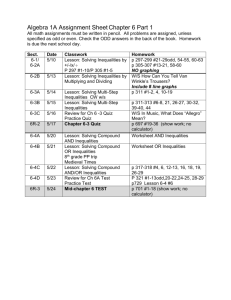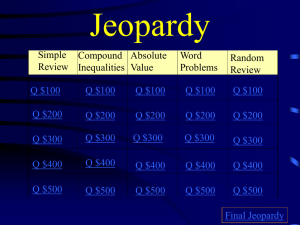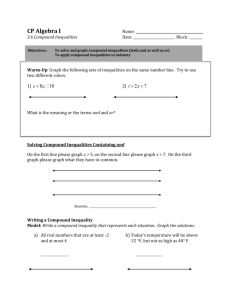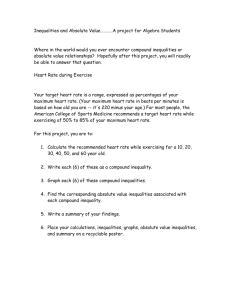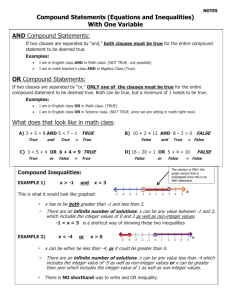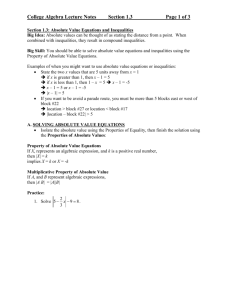SOLVE AND GRAPH LINEAR ABSOLUTE VALUE INEQUALITIES
advertisement
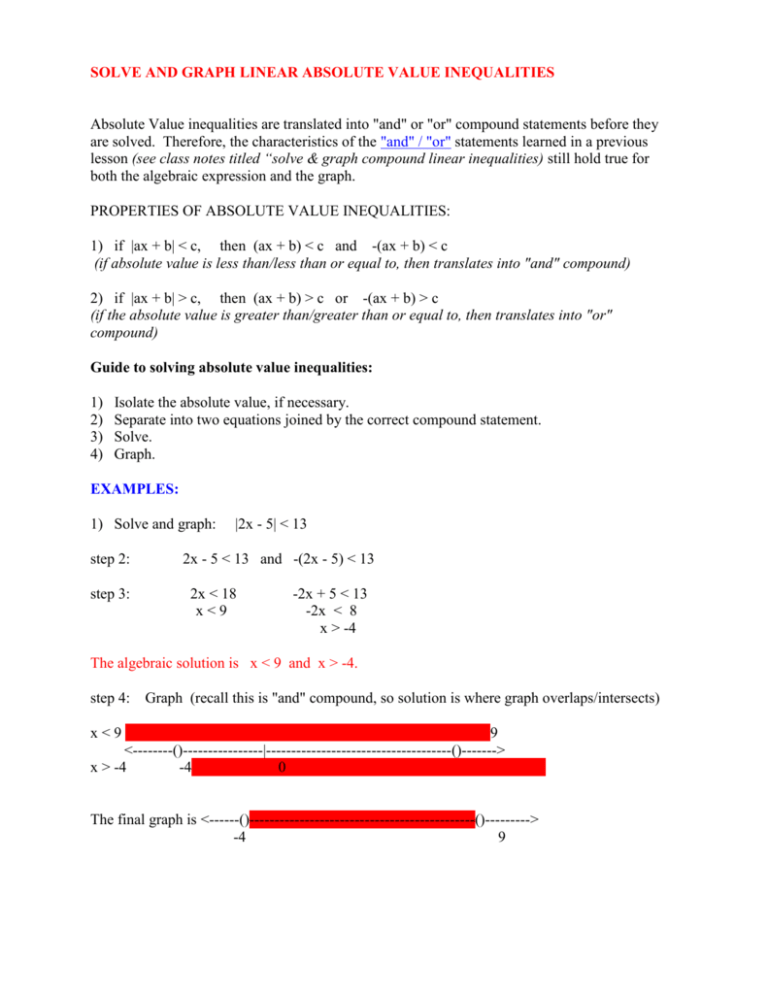
SOLVE AND GRAPH LINEAR ABSOLUTE VALUE INEQUALITIES Absolute Value inequalities are translated into "and" or "or" compound statements before they are solved. Therefore, the characteristics of the "and" / "or" statements learned in a previous lesson (see class notes titled “solve & graph compound linear inequalities) still hold true for both the algebraic expression and the graph. PROPERTIES OF ABSOLUTE VALUE INEQUALITIES: 1) if |ax + b| < c, then (ax + b) < c and -(ax + b) < c (if absolute value is less than/less than or equal to, then translates into "and" compound) 2) if |ax + b| > c, then (ax + b) > c or -(ax + b) > c (if the absolute value is greater than/greater than or equal to, then translates into "or" compound) Guide to solving absolute value inequalities: 1) 2) 3) 4) Isolate the absolute value, if necessary. Separate into two equations joined by the correct compound statement. Solve. Graph. EXAMPLES: 1) Solve and graph: step 2: step 3: |2x - 5| < 13 2x - 5 < 13 and -(2x - 5) < 13 2x < 18 x<9 -2x + 5 < 13 -2x < 8 x > -4 The algebraic solution is x < 9 and x > -4. step 4: Graph (recall this is "and" compound, so solution is where graph overlaps/intersects) x<9 9 <--------()----------------|-------------------------------------()-------> x > -4 -4 0 The final graph is <------()---------------------------------------------()---------> -4 9 2) Solve and graph: |9 + 3x| + 12 ≥ 48 step 1: |9 + 3x| ≥ 36 step 2: 9 + 3x ≥ 36 step 3: 3x ≥ 27 x ≥ 9 (subtracted 12 on both sides) or -(9 + 3x) ≥ 36 -9 - 3x ≥ 36 -3x ≥ 36 x ≤ -12 The algebraic solution is x ≥ 9 or x ≤ -12. step 4: Graph (recall this is an "or" compound, solution is the union of both graphs) <----------()------------------------|------------------------()---------------> -12 0 9



